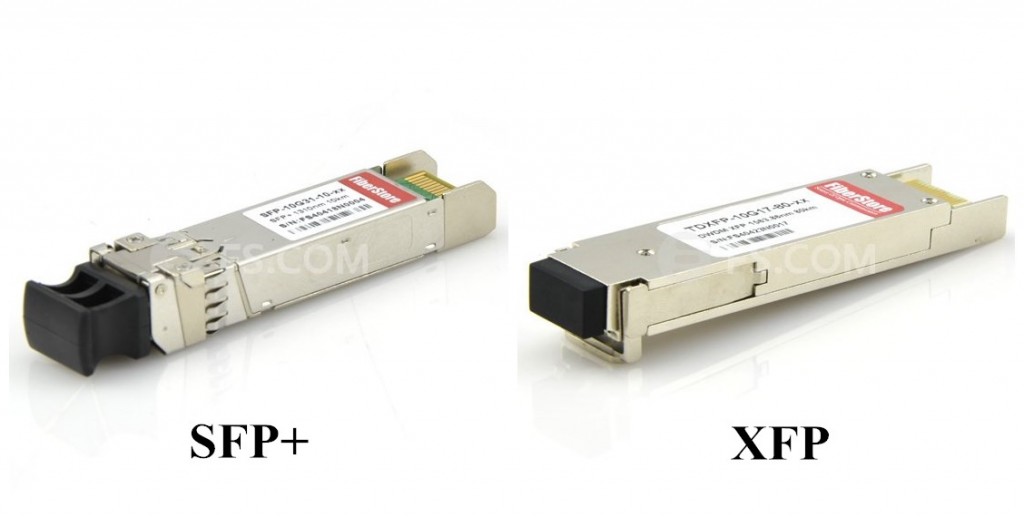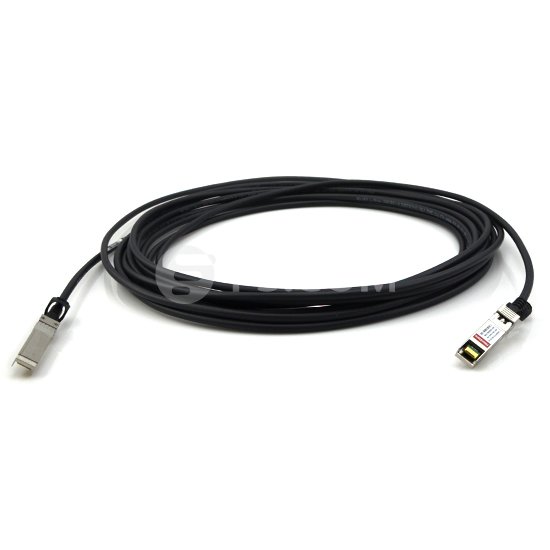April 22, 2016
An increasing number of applications require considerable bandwidth to support the transfer and streaming of large data, video and audio files. To meet the faster rates of data transmission, data carrying techniques have also gone through big technological evolutions. Two commonly used transmission standards, copper and fiber optic cables have progressed a lot to provide the needed bandwidth for data transmission over 10 Gigabit Ethernet applications. In this post, we will talk about these two kinds of cabling solutions for 10 Gigabit Ethernet.
Optical fiber connections are constructed with a combination of fiber optic cables and optical transceivers. The latter receives digital signals from Ethernet devices (switch or adapter card) and then converts them into optical signals so that they can transmit over the fiber. The most widely used optical transceiver for 10 Gigabit Ethernet is the enhanced version of the SFP (small form factor pluggable) transceiver, which is SFP+ transceiver. SFP+ transceiver has the same mechanical characteristics as SFP transceiver. It is capable of supporting 10Gbps data rates. Besides SFP+ transceiver, XFP (10 Gigabit small form factor pluggable) transceiver also can support 10 Gigabit Ethernet. Compared with XFP transceiver, SFP+ transceiver has smaller form factor, allowing for much more dense packaging of ports on switches. The picture below shows a Cisco SFP-10G-LR-S SFP+ transceiver and a Cisco ONS-XC-10G-C XFP transceiver.

How to choose a fiber optic cable fot your 10G applications? It mainly depends on the transmission distance that you need. There are various types of optical transmission. Short range and long range are the two commonly available types. Short range supports connections of up to 300 meters, while long range supports connections of up to 10 kilometers. Multimode fiber cables are typically used for short range transmission and single-mode fiber cables are used for long range transmission.
The final consideration on fiber optic cable is the connector type. The main differences among types of connectors lie in dimensions and methods of mechanical coupling. Multimode fiber cables and single-mode fiber cables require different connectors. SC and LC connectors are the most common types. Note that these cables can be connected to either XFP or SFP+ transceivers. The connector type defines the mechanical specifications of the fiber-to-transceiver interface. Thus, one could have an XFP transceiver on one end of a 10G Ethernet fiber cable and an SFP+ transceiver on the other end. As long as the cable type and connector type match, there is no problem.
For copper cables supporting 1 Gigabit Ethernet, the Category 5 unshielded twisted pair (Cat5-UTP) is utilized. But for 10 Gigabit Ethernet cabling, the standards body determined that even the enhanced Cat5e UTP traditional Ethernet cable would not be able to carry the signal reliably for any significant distance. So a new specification, was introduced and named 10GBASE-T. This calls for a 4-wire twisted pair cable with even more stringent limitations on cross-talk. It is called Cat 6a. 10GBASE-T cables for up to 100 meters are supported with a RJ45 connector on either end. Another copper cabling choice is the 10G SFP+ direct attach copper cable. With SFP+ connectors on both ends, SFP+ direct attach copper cables support 10Gbps Ethernet data transmission. 10G SFP+ direct attach copper cable like HP J9285B (as shown below) supports transmission distance up to 12-15 meters, which is often more than enough for interconnecting systems in racks in data centers.

Copper cabling is popular for transmitting data between devices due to its low cost, easy installation and flexibility. Copper is best when utilized in short lengths, typically 100 meters or less. When employed over long distances, electromagnetic signal characteristics hinder performance. In addition, bundling copper cabling can cause interference, making it difficult to employ as a comprehensive backbone. For these reasons, copper cabling has become the principal data carrying technique for communication among PCs and LANs, but long-distance transmission.
XFP transceivers, SFP+ transceivers, copper cables and fiber optic cables are all the choices for your 10 Gigabit Ethernet connections. They are able to meet your 10Gbps requirements. As a professional manufacturer and suplier in the field of optical network devices, Fiberstore offfers a large variety of high quality SFP+ transceivers, XFP transceivers, fiber optic cables and copper cables with competitive prices for your 10G applications.
Posted by: jowang at
03:31 AM
| No Comments
| Add Comment
Post contains 717 words, total size 6 kb.
35 queries taking 0.0175 seconds, 70 records returned.
Powered by Minx 1.1.6c-pink.









